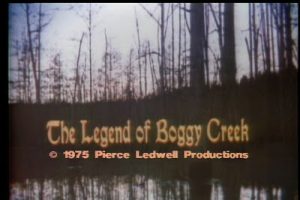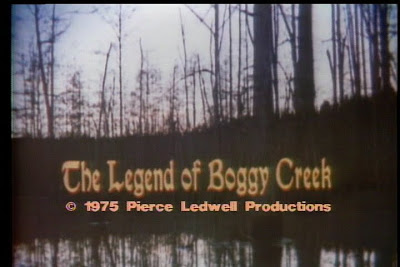
One of the major issues, the American theatrical exhibition industries has is its addiction to large Hollywood Blockbusters. It’s fortunes rise and fall on the exhibition of fewer and budget engorged films. Box office numbers are slipping and slipping badly. Millennial populations are abandoning movie going in favor of a myriad of choices that exist for their entertainment dollar.
At one time in the USA, regional appeal movies like the drive-in B Movies crafted by Earle Owensby and Charles Pierce brought in movie goers in droves. The 1970’s saw regional film economies emerge in Florida, the Northwest and especially Texas and the South East. Overnight a tool and die salesman could become a Dixie Louis B. Mayer. These films spoke to their audiences and people identified with their story line and characters.
Today other film economies globally like Argentina and Norway, have started to abandon the steady stream of product put out by Hollywood and are beginning to rely on homegrown or regional movies to fill their screens. Because of this they are enjoying a 20% on average rise in tickets sales. .
Throughout the history of American film regional film economies erupted as a the result of one or two very dedicated people who sort of created their own film communities from scratch. In Wisconsin Bill Rebane created a film economic out of the wilderness.. In Oklahoma. In that case the impetus for the creation of a regional industry was the founding of VCI/United Home Video. In Arkansas it was Charles B. Pierce and Harry Thomason. In North Carolina, it was Earl Owensby.
Owensby grew up an orphan in Cliffside, NC, and worked at a local movie theater before joining the Marines . When he returned to civilian life, Owensby began selling pneumatic tools from the trunk of an old Cadillac and in doing so eventually became a millionaire. After seeing 1973’s Walking Tall, Owensby decided to take the plunge and go head first into the movie business. He produced and starred in Challenge, the story of a politician who takes vengeance on the mob after his family is murdered. He immediately sold the film to a regional distributor for a profit.
Other films quickly followed: action films like Death Driver and Dark Sunday; the horror film Wolfman; and Living Legend, an Elvis-inspired story of a rock’n’roll singer co-starring Ginger Alden, Presley’s fiancee at the time of his death. Owensby’s biggest hit in the 1970s was Buckstone County Prison , which cast him as a half-breed bounty hunter, Seabo who takes a murder rap for a nice guy and ends up in a prison run by a psychopathic warden.. Alongside Owensby , Buckstone co-starred country singer David Allen Coe and Western film veteran Don “Red” Barry.
In the 1980s, Owensby capitalized on the 3D fad with efforts like Tales of the Third Dimension and Dogs of Hell. He also bought an abandoned nuclear power plant that was converted into an underwater sound stage, which James Cameron used for The Abyss.
In 1961 Wisconsin’s Bill Rebane decided to make a feature film, and in 1963 he began production of the science fiction feature film Terror at Halfway, starring June Travis and Peter Thompson, which marked Rebane’s becoming the first producer in Chicago to tackle an independent feature film production with a full union crew and screen actors guild talent. Unable to finance the completion of the film, Rebane sold his completed footage to Florida Independent, Herschell Gordon Lewis. Lewis went on to complete the film and release the film as Monster A Go-Go in 1965. In the late 1960s, Rebane purchased a farm property near Gleason, Wisconsin and moved there with his family. Apart from the property being used to raise cattle and horses, it also eventually became home to Rebane’s studio ‘The Shooting Ranch’, the facility which was the first full-time feature film studio in the Midwest.
Rebane used his studio to produce and direct a number of sci-fi/horror films, the first being Invasion from Inner Earth (1974), screenwritten by his wife Barbara, it was shot in 1973 with the working title of The Selected.
His next film project was The Giant Spider Invasion, starring Alan Hale Jr., Barbara Hale, and Steve Brodie. The film grossed $23 million against its $325,000 production costs. This was followed by Rana: The Legend of Shadow Lake (1975), The Alpha Incident(1978), The Capture of Bigfoot (1979), The Demons of Ludlow (1983) and The Game (1984).
Charles B. Pierce directed thirteen films over the span of 26 years, but is best known for his cult hits The Legend of Boggy Creek (1973) and The Town That Dreaded Sundown (1976). An Arkansas resident most of his life, Pierce made his directorial debut with Boggy Creek, a faux documentary-style film inspired by the legend of the Bigfoot-like Fouke Monster. The low-budget film grossed roughly $25 million, and Pierce followed that success with several inexpensive, regional films set in the southern United States, including The Town That Dreaded Sundown, based on the true story of the Phantom Killer murders in Texarkana.
Pierce continued directing films into the 1980s, when he wrote the story for the Clint Eastwood film Sudden Impact. For that screenplay, he is said to have written the phrase, “Go ahead, make my day,” which became one of the most famous movie quotes in history. Pierce’s directorial debut was The Legend of Boggy Creek, which was inspired by the Fouke Monster, a seven-foot-tall Bigfoot-like creature said to live in the swamps near Fouke, Arkansas. The film was shot at locations in Fouke, Texarkana and Shreveport, using a camera Pierce built himself at home. It was filmed in a faux documentary style, and included interviews with Fouke residents mixed with dramatizations of their supposed encounters with the creature. Like Pierce, the film’s financial backers and many of the actors had never been involved in a film before.
Released in 1972, The Legend of Boggy Creek premiered at what was later called the Perot Theatre, where lines stretched around the block to see it. Pierce did not expect it to become a financial success,but it made $55,000 in the first three weeks from that single theater. Eventually, Pierce entered into a distribution deal with Joy N. Houck, owner of the independent distribution company Howco, who paid Pierce $1.29 million for a 50 percent interest in the film. Pierce and Houck signed with American International Pictures for foreign and television distribution. It became a hit at drive-in movie theaters, eventually gaining a cult status and bringing Pierce a semblance of fame. The film went on to gross about $25 million, making it one of the highest grossing films of the year.
Fast forward to the present day. Digital technology has allowed regional filmmaking to explode, the problems is that economic barriers like the Virtual Print Fee has acted as a defacto barrier to entry for regional filmmakers. As VPF’s go away theatres, especially independent theatres may find it profitably to engage regional filmmakers to grace their screen. Other countries has adopted this practice and have found that regional films create an impetus for a regional exhibition economy. People love to see the familiar on the big screen.
History has proven that regional production can indeed be successful, foreign exhibitors have shown that regional product does well and in fact increases box office.
It is time for exhibitors to show regional movies some love….and let them show you increased box office.

